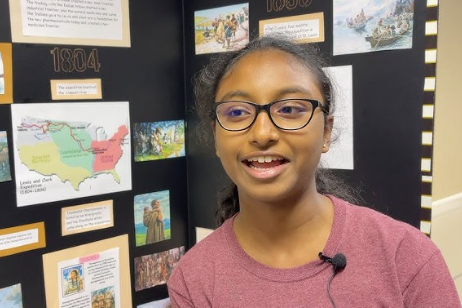History comes alive when students can explore it through engaging and accessible tools. Thanks to a wide range of free digital resources, learners of all ages can now study historical events, people, and cultures from home. Whether you’re preparing for a history test, diving into primary sources, or simply exploring the past out of curiosity, these online platforms offer high-quality, student-friendly history content at no cost.
- Khan Academy – Offers comprehensive courses on world history, U.S. history, and civics. With video lessons, timelines, and practice questions, Khan Academy makes it easy to follow historical narratives and understand key events and their impact. Its mastery learning approach helps students progress at their own pace and revisit topics as needed.
- Library of Congress – Provides access to a vast collection of historical documents, maps, photographs, and exhibits. Their “Chronicles of America” and “America’s Story” sections are especially useful for students researching U.S. history. The site also features teacher guides, primary source sets, and a virtual reading room.
- BBC Bitesize History – Features short, digestible history lessons aligned with the UK curriculum. Ideal for middle and high school students, the site covers British, European, and world history with videos, quizzes, and clear summaries. Its interactive activities make it easy for visual learners to engage with major topics.
- Smithsonian Learning Lab – Offers curated history collections with images, documents, and interactive tools. Great for exploring topics in American history, cultural heritage, and innovation. Teachers and students can create their own collections for personal study or classroom use. Collections range from Native American history to civil rights movements.
- CrashCourse History (YouTube) – A popular YouTube channel offering fast-paced, animated videos that cover world history, U.S. history, and more. Each episode provides a lively overview of major historical periods, movements, and figures. Accompanied by humor and animations, the content is engaging for both middle and high school learners.
- DocsTeach (National Archives) – A teaching tool from the U.S. National Archives, this site features thousands of primary source documents and classroom-ready activities. Students can analyze letters, maps, speeches, and more using interactive tools designed to build historical thinking skills.
- Google Arts & Culture – Offers virtual exhibits, timelines, and 3D tours of historical sites and artifacts. It’s an immersive platform for exploring world history, ancient civilizations, and famous cultural institutions. Students can virtually visit the pyramids of Egypt, scroll through digitized manuscripts, and explore art and architecture from across the globe.
- iCivics – Founded by Justice Sandra Day O’Connor, iCivics teaches history and civics through games and interactive lessons. Ideal for learning about the U.S. Constitution, government, and civic responsibility. Students can play games like “Branches of Power” and “Do I Have a Right?” to apply what they’ve learned in fun, practical ways.
- Digital Public Library of America (DPLA) – An online collection of millions of historical resources from libraries, museums, and archives across the United States. Searchable by topic, time period, and region. DPLA is ideal for research projects and includes curated exhibitions that explore major themes in U.S. and global history.
- History Learning Site – Offers clear, student-friendly explanations of major historical events, especially focused on European and American history. Useful for homework help and revision. The site includes sections on World War I and II, civil rights, the Cold War, and more, organized in chronological and thematic formats.
- Teachinghistory.org – Aimed at K–12 educators but useful for students, this site offers lesson plans, primary source analysis tools, and multimedia content that support critical historical inquiry. Its “History Content” section includes background information, timelines, and topic-specific articles.
- The Gilder Lehrman Institute of American History – Offers free access to primary sources, timelines, podcasts, and lectures from historians. Their “History by Era” tool helps learners explore U.S. history in a structured way, while the “AP U.S. History Study Guide” is a great resource for exam prep.
- Zinn Education Project – Provides teaching materials and readings that center on social justice and underrepresented perspectives in American history. While designed for teachers, its downloadable resources and articles are accessible for independent learners interested in alternative historical narratives.
- YouTube Channels (e.g., Oversimplified, History Matters, Timeline – World History Documentaries) – These channels present history in various formats: humorous summaries, detailed documentaries, and animated lessons that make complex topics more engaging.
- National Geographic Education – Offers history and geography resources that combine storytelling with maps, photos, and current events. Their lesson collections and student activities support global awareness and cultural understanding.
In summary, free online history resources give students the chance to explore the past in dynamic, engaging ways. These platforms help learners connect historical facts with broader themes, analyze primary sources, and appreciate the global impact of events across time. With just a few clicks, history becomes not only accessible—but unforgettable. Whether you’re preparing for a class, working on a project, or pursuing personal interests, these tools provide the depth and variety needed to bring history to life.













